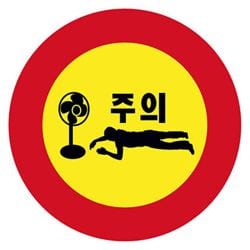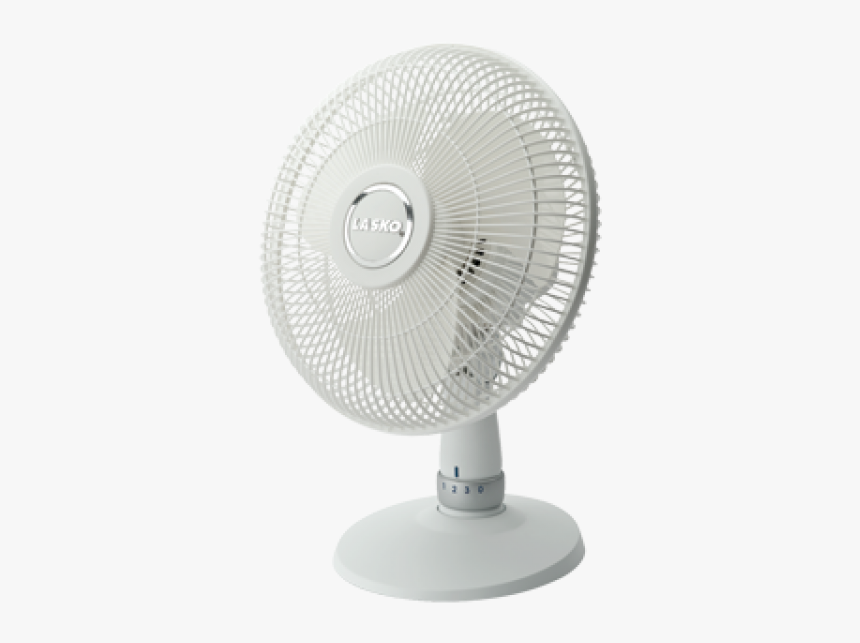Death by Fan
We have heard that the summer may provide a respite from the ravages of the coronavirus; however, we should be careful not to let our guard down too much as there are other dangers that summer temperatures in Korea can pose: heat cramps, heat exhaustion, heat stroke, and possibly the most dreaded of all, fan death. Fan death has been taken quite seriously in Korea, especially as the use of electric fans first spread to the general population, much like the fear of the coronavirus after its introduction into Korea. What follows is an article on “Fan Death” written by Stephen Redeker, which first appeared in the February 2012 issue of the Gwangju News, now supplemented with additional material. — Ed.
In this issue, we explore death by a handy little appliance to cool us off in the summer: the electric fan. How is it that such a seemingly benign device could cause a nation to change its sleeping habits? Why do most of the fans in Korea have timers on them? If you do not know the answers to these questions, reading further could save your life (or at least enlighten you about one of Korea’s most infamous modern-day beliefs).
“Fan death” (seonpunggi samang, 선풍기 사망) is the name given to the belief that going to sleep in an enclosed room with an electric fan blowing directly on an individual could be fatal. According to a 2005 press release by the Korea Consumer Protection Board (KCPB),[1] a government-funded agency, “asphyxiation from electric fans and air conditioners” was one of the five leading causes of summer injuries in the three-year period of 2003–2005, based on an analysis of data collected by the Consumer Injury Surveillance System (CISS). The press release also mentions how direct, prolonged contact with a blowing fan could cause hypothermia (a dangerous drop in body temperature) or lead to death from too much carbon dioxide and not enough oxygen. The KCPB also reported twenty cases of asphyxiation in the same three-year period that were caused by leaving electric fans and air conditioners on while sleeping. It was suggested that to prevent this, doors should be left open when going to sleep, fans should be oscillating, and timers should be set to turn the fans off automatically rather than run all night (this last item explains why most Korean fans come equipped with timers).

South Korea is the only country in the world with a widespread belief that fans can cause someone to die while asleep. Perhaps the reason why no other country promotes this notion is that there is no substantial evidence to support it. There are, however, more than a few theories of why “fan death-related symptoms” could occur, but none of them are likely to be fatal. For example, a household electric fan is not strong enough to create a vacuum in a room that would make it difficult to breathe. Nor can a fan critically affect the ratio of oxygen to carbon dioxide because its blades cannot chop up the molecules, and its electric motor hardly uses any oxygen to operate. There are no fatal amounts of ozone emitted from an electric fan. When it comes to hypothermia, the room would already need to be extremely cold for this to occur, and a blowing fan cannot cause the temperature in an enclosed room to drop that drastically. If any of these scenarios came even close to occurring, the person would most likely wake up from the discomfort.
A number of medical professionals have said that fan death is impossible. One such person is Dr. Lee Yoon-song, a professor at Seoul National University’s medical school. He has performed autopsies on some media-reported “fan death victims.” He found that the main cause of death was not from the fan itself (although it might have sped things up). Most of the victims were elderly people who were already afflicted with severe health issues such as heart or lung disease, or alcoholism. He says that the media does not do a good job in reporting the facts when they publish stories about deaths where electric fans are present.[2] (After all, a fan death story would be far less interesting if it focused on the deceased’s pre-existing conditions.)

Due to publicity and rumor, a considerable number of Koreans still believe that fan death is possible. Those who believe heed all the warnings – and why should they not? They heard about it once or a few times in their early lives and just go on believing it because nobody convincingly disputes it. Every so often, a news report mentions fan death, thus reviving the notion – as does, for example, a 2011 Korea Herald article focusing on the “fan death myth” while police have not yet determined the cause of death.[3] Much more alarming is this 1997 article in the Korea Herald that stated, “The heat wave, which has encompassed Korea for about a week, has generated various heat-related accidents and deaths. At least 10 people died from the effects of electric fans, which can remove oxygen from the air and lower body temperatures.”[4]
Some who cannot bring themselves to believe the fan death reports have pointed to the possibility of the government propagating conspiracy theories in order to shift blame away from suicides and/or other unexplained deaths. Or perhaps, it is the government’s attempt to keep electricity use down during the hot summer months. There are others who have ever-so-slightly more “scientific” suggestions that the direct air from an electric fan makes breathing difficult, and also that the air from dirty fan blades causes colds, influenza, asthma, or splenitis, and resulting in death.[5]

None of the “scientific” explanations for fan death come close to being airtight, and none of the conspiracy theories hold much water. What could have more “logically” led to the formation of the fan death fallacy? Could it have been concern with the supernatural? Until just very recently, the average Korean has been quite superstitious. When electric fan use became commonplace in the 1970s in Korea, fortunetellers, shamanistic rituals, and talismans were as common as the swarms of mosquitoes and the belief that evil spirits dangerously lurked in the dark of night. Similar to the belief in some cultures that the early camera would capture one’s soul, it is quite plausible that many Koreans believed that the airstream created by this newfangled, evil spirit-infused “wind-maker” would whisk away one’s life breath as it swept over its unsuspecting, open-mouthed victim lost in deep sleep – all the dastardly deeds of those evil spirits of the night, to be sure!

This is not to suggest, however, that you turn off your electric fan at night, but instead that you do use the timer, and do not point it directly at your face. If lingering worries remain, make sure you keep that paper talisman tucked tightly under your pillow. And it might not be a bad idea to finally make that frequently thought-about visit to the nearby fortuneteller to ascertain exactly what your future may hold.
Written by Stephen Redeker.
Supplemented by David Shaffer.
Sources
[1] Storyteller. (2011, August 30). South Korean fan death. Urban Legends Online. https://urbanlegendsonline.com/south-korean-fan-death/
[2] Surridge, G. (2007, January 10). Newspapers fan belief in urban myth. JoongAng Daily. http://web.archive.org/web/20070110052746/http://joongangdaily.joins.com/200409/22/200409222123324579900091009101.html
[3] Yang, S., & Kang, Y. (2011, July 4). Summer death revives fan death myth. Korea Herald. http://www.koreaherald.com/view.php?ud=20110704000552
[4] Candice in Korea. (2010, June 18). Beware the fan! https://candiceinkorea.weebly.com/bla-bla-blog/category/fan%20death
[5] Namu.wiki. (2020, June 27). 선풍기 사망설 [Electric fan death hypotheses]. https://namu.wiki/w/선풍기 사망설





